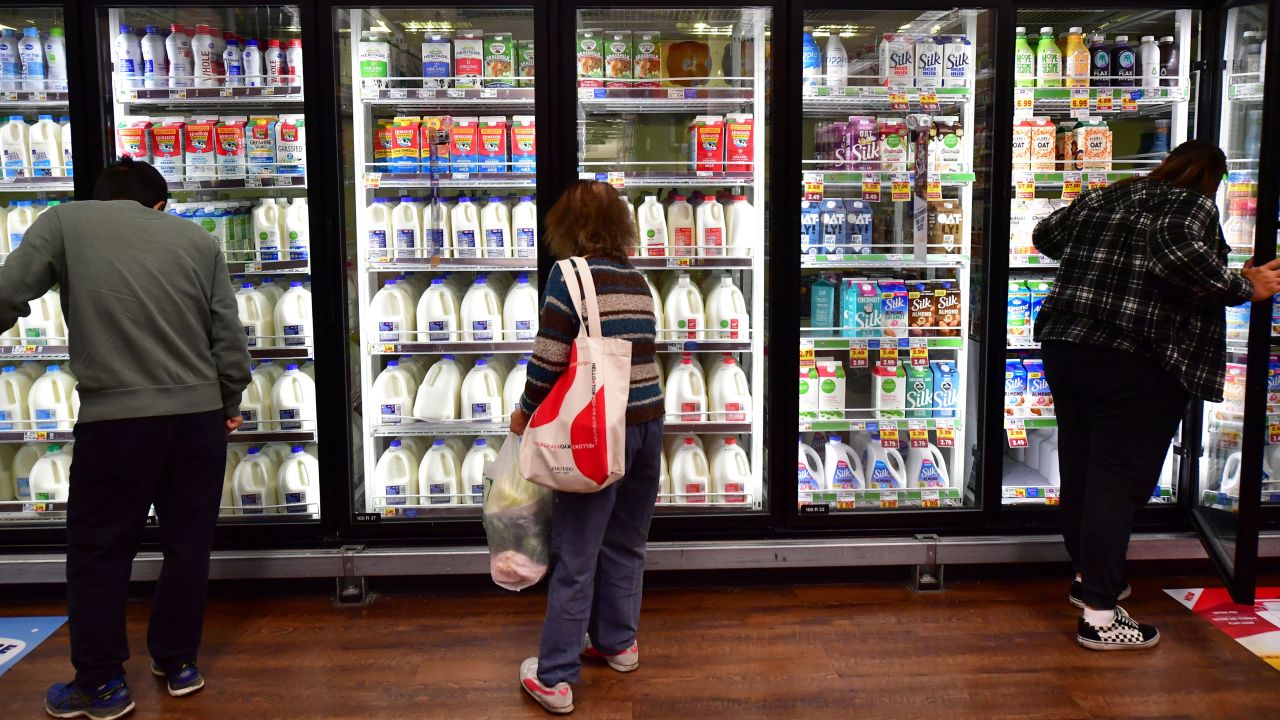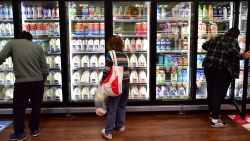US inflation took a breather last month for the first time since August. Prices still increased, but at a slower pace than in previous months.
The Consumer Price Index was up 8.3% in the 12 months ended in April, the Bureau of Labor Statistics reported Wednesday, slightly higher than economists had predicted. It was a decrease from the 8.5% recorded in March, which had been the highest level in more than 40 years.
Stripping out more volatile product categories like food and energy, the CPI stood at 6.2% over the same period, less than the 6.5% reported in March.
For April alone, prices increased by 0.3%, adjusted for seasonal swings, less than the 1.2% jump recorded in March. Without food and energy prices, core inflation rose 0.6%, more than the 0.3% advance in the prior month.
The problem at the core
The increase in core inflation is making economists nervous.
“Inflation is no longer contained to the supply chain,” said Jefferies chief economist Aneta Markowska.
Businesses have been building up their inventories, which helps core inflation on the goods side, while prices in the services sector are soaring as Americans return to traveling and other leisure activities. The latter will likely make for stickier inflation that takes longer to come down again, according to Markowska.
“Inflation remains widespread, making it all the more difficult to curtail,” wrote Wells Fargo economists Sarah House and Michael Pugliese in a note to clients. “On an annualized basis, the core CPI inflation experienced in April was still more than triple the [Federal Reserve’s] 2% target.”
That means the April inflation data is unlikely to give the central bank a reason to adjust its current path of monetary policy, which includes larger-than-usual rate hikes and a swift roll-off for its massive balance sheet.
Past the peak
Wednesday’s data suggests that the inflation peak is behind us, just as economists, the Federal Reserve, the White House and the American people hoped. But there are still a lot of factors that will keep prices elevated over the summer.
The war in Ukraine has put pressure on energy and food prices. Meanwhile, renewed Covid-related lockdowns in China threaten to exacerbate the supply chain issues that the world has been struggling with over the past year. That means it’s uncertain how much the pace of inflation can slow down until these things are resolved.
“Lower gasoline prices offered some reprieve to inflation this month,” said House and Pugliese. “April’s respite will be short-lived with pump prices hitting a record high this week.”
“The peak of inflation may be behind us, but today’s CPI report points to a long, slow descent or maybe even a plateau around 8% until prices start to drop significantly,” said Robert Frick, corporate economist at Navy Federal Credit Union, in emailed comments.
President Joe Biden called inflation “unacceptably high” on Wednesday, noting that “bringing it down is my top economic priority,” according to a statement released after the CPI report.
“The fight against global supply chain issues related to the pandemic and [Russian President Vladimir] Putin’s price hike will continue every day,” he said, ahead of a trip to Illinois where he will speak with farmers about lowering their costs, producing more and lowering food prices for Americans.
What got more expensive?
April price increases were particularly stark for housing, food, plane tickets and new cars: Air travel costs ticked up 33.3% year over year, the biggest jump since December 1980.
Food prices rose 0.9% last month and 9.4% year over year, the biggest jump since April 1981. Grocery store prices were up 10.8% for the year ended in April, the biggest increase since November 1980.
However, energy prices fell in April as gasoline prices came down from their March peak. Over the 12-month period, energy prices soared 30.3%. In May, however, gas prices ticked higher again, so this part of the CPI could look worse again in next month’s data.
Housing costs, which are comprised of rents and owners’ equivalent rent for people who own their homes, rose in April by 0.5% for the third month in a row. Year-over-year, housing costs are up 5.1%.
“Shelter inflation has yet to peak,” according to the Wells Fargo economists.
Because rents change infrequently, the Labor Department collects rent data from each sampled apartment or house only every six months.
Economists have been concerned about the increase in housing costs, which will likely stick around after other price peaks pass.























